The company
RHÖN-KLINIKUM AG is a listed hospital company. The management of the company is performed by the management board. Three members share the responsibility of the management. The Chairman of the Management Board is Stephan Holzinger, the Chief Operating Officer is Dr. Ing. Gunther K. Weiß and Medical Director is Prof. Dr. med. Bernd Griewing. In total, RHÖN-KLINIKUM AG has five clinic locations in Bad Neustadt a. d. Saale (Bavaria), in Giessen and in Marburg (Hesse), in Bad Berka (Thuringia) as well as in Frankfurt (Oder) (Brandenburg). For this purpose, about half a dozen medical care center companies are managed, which are settled at the various hospital sites.
The RHÖN-KLINIKUM has about 16,700 employees. In order to ensure medical care for everyone, the company pursues a strategy of group-wide direct exchange of knowledge and experience among its employees with the goal of building a close link between medicine and management. The pursuit of the continuous improvement process causes RHÖN to constantly develop and establish new and innovative projects.
Objective RKA: Campus concept and digitization
The renewal and expansion of the RHÖN-KLINIKUM Campus Bad Neustadt formed the idea to clarify the complex structures and processes of the three care centers (outpatient, clinical, rehabilitative). The role of the patient, prevention and health promotion are additionally considered in order to create a dialog picture, with the aim of serving as a visualized campus tour.
With the help of the dialog picture these important connections are presented vividly. It serves as orientation and enables understandable and sustainable communication. Participants can find themselves in the picture. In the form of this interactive and creative knowledge transfer, an overall understanding of the RHÖN Campus concept can be developed. It also has an identity-building effect and strengthened the mutual recognition. The purpose of the dialog picture is to create a new type of patient and employee communication. Additional offers such as prevention and health promotion can be easily explained here. These are already implemented in reality or conceivable as a vision of the future. A written guide also provides background information beyond the scenes.
External target group: patients, interested parties or visitors.
The dialog picture serves as an analogue guide. In addition to the overall picture, the scenes with descriptions and background information are shown on the campus area on monitors or tablets. But also on the website (for example by glossary, slideshow of individual scenes with description, ...), the picture and its individual scenes can be viewed.
Internal target group: Employees
Only when employees are well informed they can identify with the RHÖN Campus concept as a whole. So only when an internal identification is achieved, a positive external effect can take effect.
The development
The dialog picture for RHÖN-KLINIKUM Campus Bad Neustadt summarizes the new and existing processes of the Campus Bad Neustadt. The goal was to create a visualized campus tour.
The core development was carried out through cooperation between the Group units Process Management as well as Innovation Management and Network Medicine. For this purpose constructive meetings and round tables took place in which the different scenes and their contents were determined. The cooperation with the company DIALOGBILD was consistently pleasant and effective. Through professional support, the enablement of the wishes and ideas of the RHÖN development team as well as the continuous communication and coordination, the goal of creating a visualized campus tour was realized in a timely adequate framework of a few months by DIALOGBILD.
The use case
The RHÖN-KLINIKUM uses the dialog picture in different forms. It serves both employees and patients as an overview and visualized tour.
An interactive version of the dialog picture was also created to describe individual areas in more detail.
„The healthcare system is currently facing several major challenges. Medical care must deal in particular with demographic change, technical progress, digitization and a shortage of skilled workers. In order to maintain efficient healthcare, it is in our interest to reorganize patient care.
The dialog picture, which depicts the concept of our new RHÖN Campus Bad Neustadt with its processes, serves the viewer as a visualized tour and lets them recognize which approaches we are pursuing with regard to the challenges. In addition, the different scenes allow the employees to recognize themselves. But also the patient was integrated as an active partner in medical care, to illustrate his important role. The care is geared to the needs of the patients!
Our strategy of linking the areas of "Prevention, Outpatient Care, Inpatient Care, Rehabilitation and Health Promotion" in a sustainable concept is illustrated by a connecting road. This understanding is also supported by the dialog picture, which is why dialog picture integration, from the board's point of view, can become an important communicative approach in our Group."
"The creation of the dialog picture was a challenge which the entire project team worked on together with ambition and fun. The concept of a picture based on a campus, which was still in the construction phase and the elaboration of the various key scenes that make the Campus Bad Neustadt recognizable as a sustainable provider, was an impressive success for the project team. The integration of future care approaches was particularly important to us. But also the mapping of the various players and sectors in connection with the patients and their cross-cutting digital interconnection with the RHÖN-KLINIKUM Campus, with regard to the future cross-sectoral care, was successfully implemented with our partner DIALOGBILD.
Therefore the dialog picture provides a meaningful statement for our future supply strategy at RHÖN Campus Bad Neustadt. It is displayed as a large exhibition wall as well as in digital form showing the individual scenes. It is also supplemented by the explanations of the different scenes, which are available to the viewer. The professional collaboration with DIALOGBILD contributed to this positive result."
INDIVIDUAL SCENES AND THEIR MEANING
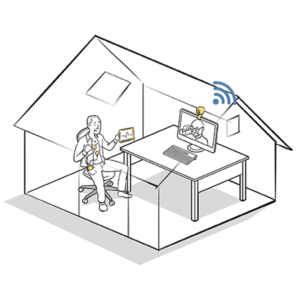
Domestic environment
From home, health parameters are transmitted digitally to doctors and specialists or clinics. Telemedical diagnostic equipment is connected directly to a digital terminal (e.g., tablet or smartphone) on which the patient can read the results directly. These are available, with the consent of the patient, to a specialist or primary care physician or clinic. If necessary, the doctor also communicates with the patient via video communication. In combination with the diagnostic results, he estimates the necessary next steps. In an emergency, an ambulance will come directly to the place where the patient is and valuable time can be saved.
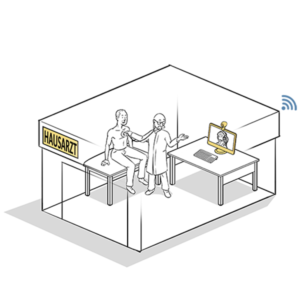 The role of the primary care physician
The role of the primary care physician
The primary medical examination is often the first entry into health care. The doctor decides to refer the patient for further examinations to a clinic or another specialist. For example, the doctor can now contact the RHÖN-KLINIKUM campus by means of video-based consultation and discuss the further course of action. The blue transmission line represents digital networking between external actors and the RHÖN-KLINIKUM Campus.
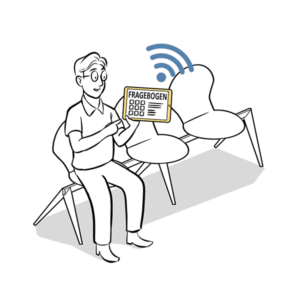 The active patient
The active patient
Through the use of digital platforms and tools, the patient can become active and use the waiting times effectively. The patient is thus included into the organization and treatment process according to his abilities. For example, it is possible to take part in digital patient surveys. Digital survey findings before, during or after the visit can provide information about specific care needs, possible risk factors and satisfaction of the patient. Patients have the opportunity to identify potential for improvement and thus contribute to an increase in quality. The evaluation and analysis of the survey results is an important instrument of quality management at the RHÖN-KLINIKUM campus (including risk management, patient satisfaction, quality management.) Since the evaluation is automated, the digital implementation of the survey saves valuable resources. These can be used for further measures to increase the quality.
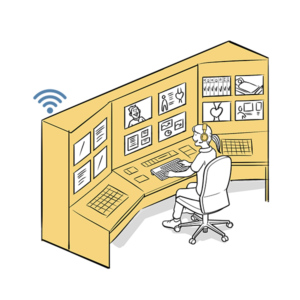 Control center
Control center
The control center functions as the central hub within and outside of the RHÖN-KLINIKUM campus in terms of occupancy, diagnostics and coordination. It is also the first venue to call on campus for external actors, such as primary care physicians and patients. From there, patient flows are navigated and the internal organization around resource and occupancy management, diagnostics and surgery planning are efficiently controlled. The goals are to increase process loyalty and to avoid faulty controls. This is only possible through a necessary degree of transparency and the right overview.
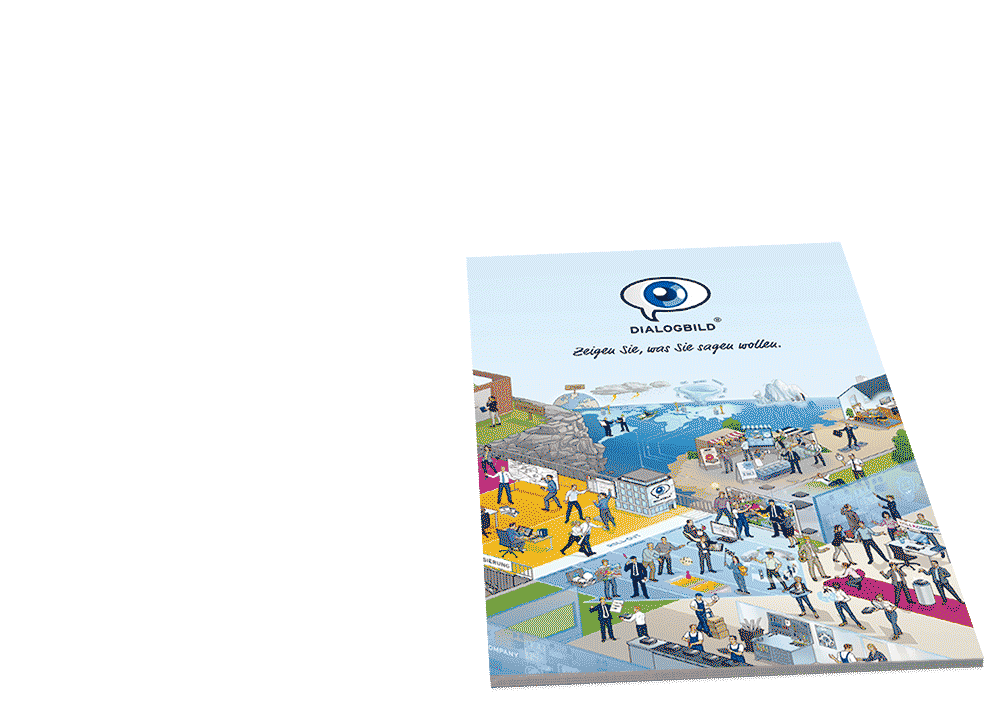 SELECT INFO PACKAGE
SELECT INFO PACKAGE